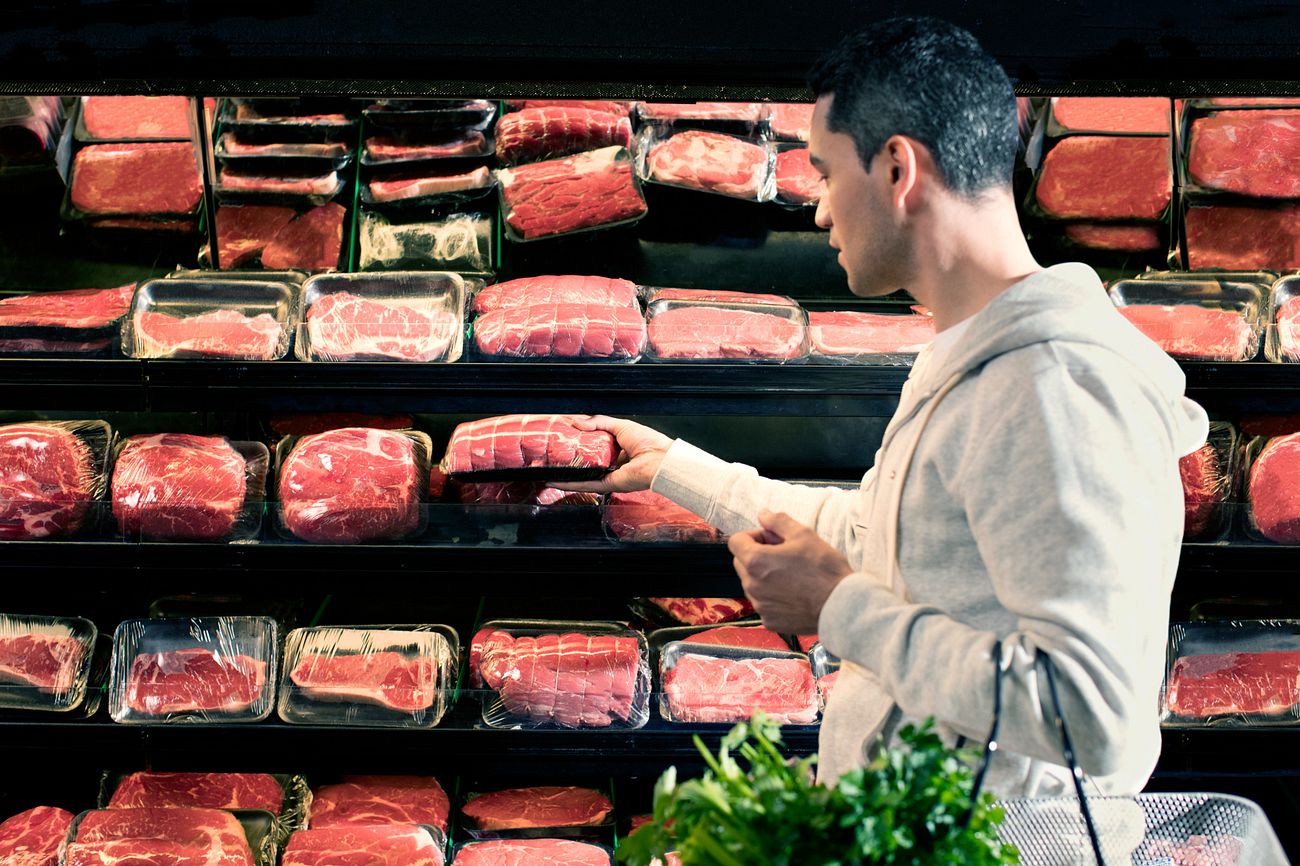How to Choose the Right Cut of Beef
Not all cuts are created equal. Here are some pointers to make sure you pick the right cut for a delicious meal, every time. In addition to the actual cut, you also want to consider things like Marbling, Color, Aging and Production Method (Grass-finished, Natural, etc.),
Not all cuts are created equal. Here are some pointers to make sure you pick the right cut for a delicious meal, every time. In addition to the actual cut, you also want to consider things like Marbling, Color, Aging and Production Method (Grass-finished, Natural, etc.),
Learn the Cuts of Beef
Can you substitute a bottom round steak with a top round steak?
How do you cook a sirloin roast?
What cuts are good for stir-fry?
All these answers, and more...Use this guide to search cut names, or explore the cuts by type of recipe.

Marbling
is the white fat that is interspersed within the lean muscle.
Sometimes, especially in grass-finished beef, the fat can appear more yellow in color due to the animal's diet prior to harvesting. While super-lean cuts provide a great option for those individuals requiring a low-fat diet regimen, it's also important to recognize that marbling greatly affects flavor. That is why the degree of marbling is one of the primary determinants in quality grade.
Color
The color of the meat should be bright, cherry red. But remember, beef does brown as it is exposed to air.
If you store beef in a Ziploc or other plastic bag with a small hole, you will notice it browns quickly in your fridge. While it does not mean the meat has spoiled, you should always throw it out when in doubt.
Alternatively, if you buy vacuum-packaged meat, it may appear darker than normal. This is not a flaw with the meat, but rather a lack of oxygen passing through the packaging. The packaging is what allows it to stay fresh in your fridge longer than the standard styrofoam and cellophane packaging.

Aged Beef
Beef aging does not pertain to the age of the cattle but instead refers to the amount of time the meat has been stored and refrigerated after slaughter. Aging beef involves storing meat at refrigerated temperatures to enhance tenderness and flavor. Nearly all beef sold is aged in some way, but this may not be the case if you are buying locally. Make sure to ask your butcher or farmer to find out for sure.
There are two choices for aging beef, wet and dry aging. Let’s explore the two methods.
Beef aging does not pertain to the age of the cattle but instead refers to the amount of time the meat has been stored and refrigerated after slaughter. Aging beef involves storing meat at refrigerated temperatures to enhance tenderness and flavor. Nearly all beef sold is aged in some way, but this may not be the case if you are buying locally. Make sure to ask your butcher or farmer to find out for sure.
There are two choices for aging beef, wet and dry aging. Let’s explore the two methods.
Wet Aging
Wet aging includes storing meat in sealed, airtight bags under refridgeration (32°F to 34°F) up to 3 weeks or 21 days.
Wet aging results in traditional beef flavor and is the most common aging method.
Dry Aging
Dry aging is less common than wet aging due to the complexity and cost. Beef is stored uncovered in a refrigerated room (32°F to 34°F) under controlled humidity and air flow for up to 4 weeks. Dry aging results in distinctive brown-roasted beefy flavor.
Production Method Labels
Production method refers to how the cattle were raised. Use this infographic to brush up on what grass-finished, grain-finished, natural, and organic terms mean!

